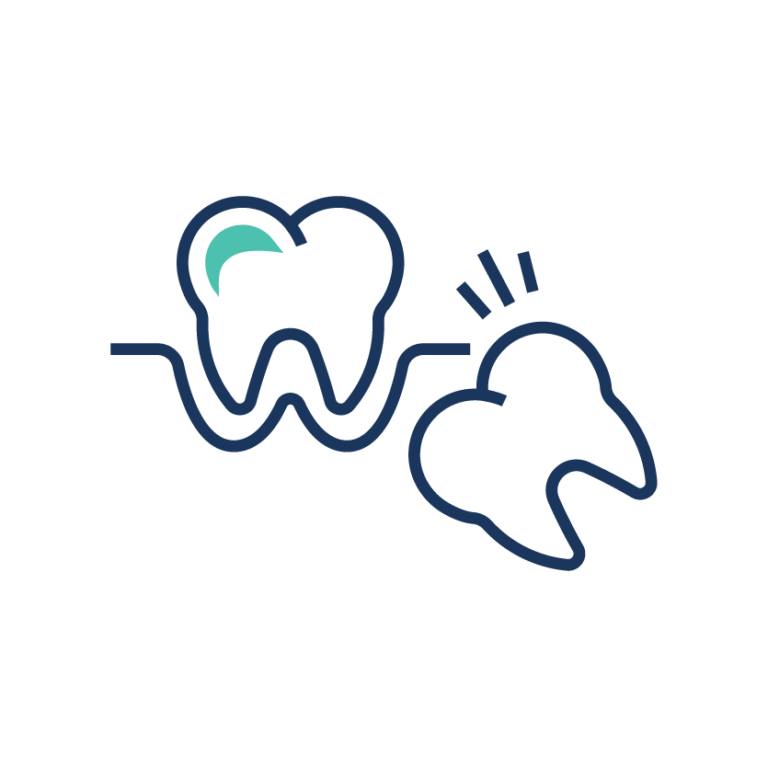Tori Removal and Alveoloplasty
When a patient hears either a tori removal or alveoloplasty being recommended, typically their first question is, “What exactly are these and what should I expect?” As a dentist that regularly performs tori removals, Dr. Perryman is here to answer your questions. Read on to learn more about these procedures.
At BiemCare, we perform tooth extractions in Camas for patients with dental trauma, tooth crowding, periodontal disease, and other conditions.
Do you have an issue with a wisdom tooth? Visit our wisdom tooth extractions page to learn more about this procedure, or schedule your wisdom tooth removal.
Tori Removal
Tori are bony growths that can appear in either the upper or lower jaw. One such condition is known as torus palatinus, which actually affects one out of five individuals. Tori usually do not pose much of a health risk since they are essentially excess bone material and are benign growths. Usually, tori are only removed when the growth becomes so pronounced that it affects the patient’s quality of life or oral health.
If tori are not removed before dentures, you will most likely encounter discomfort, excess plaque, and possibly periodontal pockets, which can lead to infection and gum disease. Therefore, having tori removed prior to dentures will make your experience much more comfortable.
Alveoloplasty
An alveoloplasty is a procedure that recontours jaw material following a tooth extraction. The term alveoloplasty is actually a portmanteau of two Greek terms: the alveolus is the bony socket that seats the teeth within the jawbone, and the term plastos becomes the suffix -plasty, which refers to something being molded or reshaped. Therefore, alveoloplasty can be defined as “reshaping the tooth socket.”
Depending on your treatment plan, an alveoloplasty may be performed during the same visit as your tooth extraction, or during a follow-up visit after the extraction site has healed.
In the lead-up to a tooth replacement procedure such as dental implants or dentures, your dental provider may an alveoloplasty. This is a term that is new to many patients, but is actually a common procedure that is performed to correct surface imperfections of the jawbone.
When you lose a tooth, either from dental trauma, periodontal disease, or extraction, the socket is sometimes not ready for a tooth replacement. Alveoloplasties are performed to recontour the socket prior to the placement of a dental implant, bridge, or denture fitting.
PROCEDURE TIME: VARIES
In the lead-up to a tooth replacement procedure such as dental implants or dentures, your dental provider may recommend an alveoloplasty. This is a term that is new to many patients, but is actually a common procedure that is performed to correct surface imperfections of the jawbone.
When you lose a tooth, either from dental trauma, periodontal disease, or extraction, the socket is sometimes not ready for a tooth replacement. Alveoloplasties are performed to recontour the socket prior to the placement of a dental implant, bridge, or denture fitting.
After a tooth extraction, the alveolar bone (the bone that contains the sockets) may heal unevenly. The bumpy ridges left behind can complicate tooth replacement options such as dental implants, bridges, or dentures.
Recontouring the edentulous ridge increases the likelihood that the placement of the dental implant, dentures, or dental bridge will be successful.
If you are being fitted for dentures, an alveoloplasty may be recommended to improve the fit of the dentures and prevent uneven pressure (and sores) on the gums.
Tori are bony growths that can occur appear in either the upper or lower jaw. One such condition is known as torus palatinus, which actually affects one out of five individuals. Tori usually do not pose much of a health risk since they are essential excess bone material and are benign growths. Usually, tori are only removed when the growth becomes so pronounced that it affects the patient’s quality of life or oral health.
If tori are not removed before dentures, you will most likely encounter discomfort, excess plaque, and possibly periodontal pockets, which can lead to infection and gum disease. Therefore, having tori removed prior to dentures will make your experience much more comfortable.






